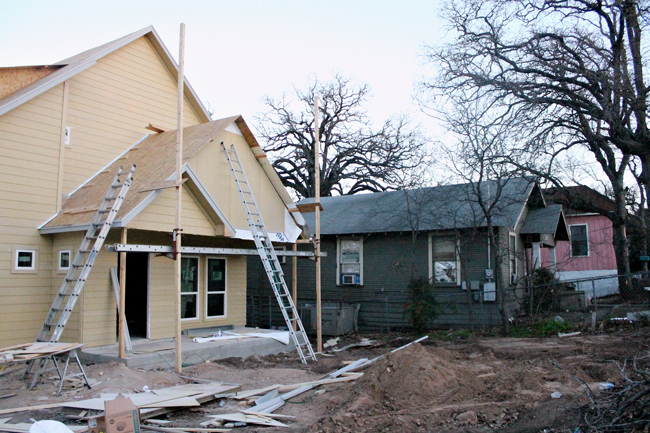Driving north up I-35, I notice one thing: the stark visual contrast of what lies on either side of the freeway.
Last month Forbes identified Austin as the fastest growing city in the country, and, with events like SXSW contributing nearly hundreds of millions of dollars a year to the Austin economy, it’s no wonder. As City of Austin demographer Ryan Robinson told local news station KVUE, 150 new people move here every day; every year, the city accumulates a net of more than 40,000 new Austinites.
These people, obviously, have to move somewhere, and an unfortunate consequence of this reality is the gentrification of poorer communities in the city, such as those in East Austin.
Gentrification is a natural product of wealthier — usually white — people moving into an established area and displacing the current residents, who are typically minorities. Not only do these residents get priced out of their homes as property values increase, but they also have to watch their neighborhoods lose their identity.
Austin hasn’t been immune from this process. East Austin is the city’s epicenter of poverty, obesity and crime, all of which can be linked to a shortage of resources. You may ask, “Well, why, then, is East Austin, specifically, plagued with these social calamities?” It is the grim result of one dark, devious-sounding city mandate: the 1928 Master Plan, a solution posited to systematically institutionalize racial segregation of black people. The plan stated that “all the facilities and conveniences be provided the Negroes in this district, as an incentive to draw the Negro population to this area,” effectively expropriating established freedmen communities and zoning them off east of East Avenue, or what is now I-35.
Historically neglected neighborhoods are the most vulnerable to gentrification. As these neighborhoods are part of a whole, the entire city is affected in the face of gentrification. Neuroscience sophomore James Zara shared how gentrification has affected his place of residence. “Recently, there has been an influx of wealthier people coming into Midtown RV Park,” Zara says. “It seems that even the RV park is experiencing gentrification as wealthier families with luxurious RVs are swapping with lower-income families.”
Austin is an attractive place to live, as evidenced by its rapid population growth, and places like East Austin offer developers cheap land and easy access to downtown. However, the resulting change isn’t always well received by longtime residents. With popular slogans like “Austin Sucks. Please Don’t Move Here” and “Keep Austin Weird,” we attempt to preserve our city’s identity in the face of inevitable social processes like gentrification, which is founded on impermanence.
To the extent that East Austin becomes a playground for the wealthy upper middle class, the process is detrimental to the city’s culture. If gentrification were to succeed, and an area were to consist solely of wealthy residents, it has eliminated all people of lower socioeconomic status who are typically minorities. Remember: A city’s culture is defined by its diversity of demographics and latent subcultures.
Though gentrification is a complex natural process of our capitalist society — with a cascading flurry of varying causes and effects, for better or for worse — we should at least be aware that every action committed has a consequence in the society in which we live.
Dominguez is a biology sophomore from San Antonio.





















